
Sustainability efforts are often associated with businesses who offset their carbon emissions by purchasing carbon credits. But wait, we aren’t a business…. so what gives? Although companies play a significant role in leaving large carbon footprints, you’ll be surprised at how much individuals contribute collectively. For example, here at BookeryBliss we read a lot of books. Books require paper, and paper requires trees. Did you know that 42% of all global wood harvest is used to make paper? And just like that, our beloved hobby is also a contributing factor to our carbon footprint. We not only want to be support global sustainable development but also hope to educate others at the same time. These are just a few of the things that can rack up our invisible carbon debt.
WHY IT MATTERS
REFORESTATION
Reforestation has gotten a lot of attention lately – and for good reason. Trees absorb harmful carbon from the atmosphere, filter our water, and provide habitat to over 80% of the world’s terrestrial biodiversity. They are also key ingredients in 25% of all medicines!
Reforestation remains the most prominent solution in addressing a variety of environmental challenges by rebuilding forests after fires and floods and also help reduce our carbon footprint. As a matter of fact, recent studies indicate that 1 billion hectares of forest could even save the planet.
CONSERVATION
While reforestation allows us to restore what has already been lost, conservation allows us to protect what we currently have. When combined, reforestation and conservation (aka avoided forest conversion) allows us to mitigate our carbon emissions while also making a significant impact that benefits nature and biodiversity. We need both to make a greener world.
Along with protecting mature forests and diverse habitats, conservation also includes maintaining complex ecosystems and responsible water management. Two-thirds of the world’s population is projected to face water scarcity by 2025, according to the United Nations, so it’s crucial we take conservation seriously before it’s too late.
OCEANS AND WILDLIFE
For numerous reasons, taking care of and protecting our oceans and waterways is important for the survival of all inhabitants of the planet. Already, at least 123 freshwater species became extinct during the 20th century. Of the 1200 species currently listed as threatened or endangered today, 50% depend on rivers and streams. If current patterns continue, we will have emptied the world’s oceans of fish by 2048.
Not only does plastic pollution in our oceans pose risks for the safety and health of marine animals, but there are health and economic implications for humans as well – through a process called bioaccumulation. Since 84% of plastic in the Great Pacific Garbage Patch was found to have at least one Persistent Bio-accumulative Toxic (PBT) chemical, animals consuming this debris are therefore ingesting the chemicals attached to the plastic, in which humans then consume themselves.
JOIN THE CAUSE
How you can help
We’ve put together some fundraisers to help support our favorite environmental charities. All donations go directly to the organizations listed and BookeryBliss does not receive any portion of the funds. Each fundraiser is hosted on the charity’s independent platforms and are subject to their own terms and conditions. These platforms are not hosted, maintained or affiliated with BookeryBliss. All contributions are voluntary.
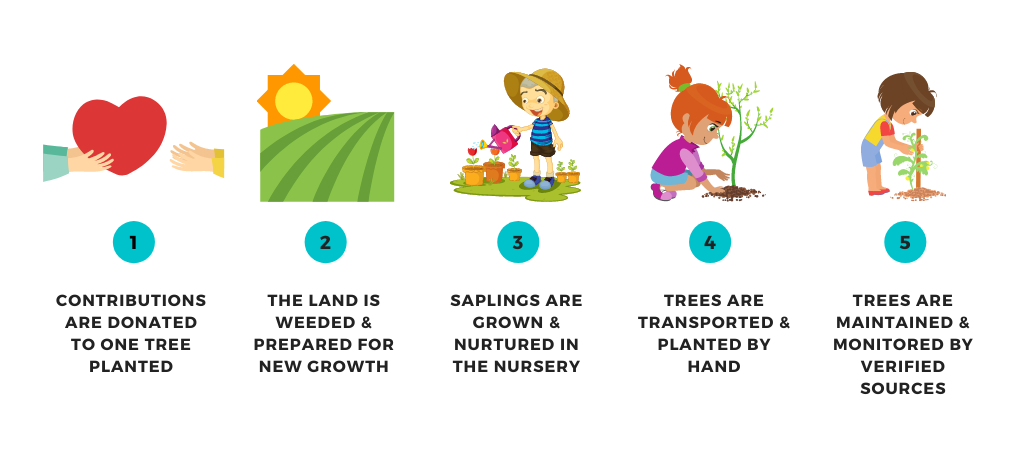
One Tree Planted
$1 dollar plants 1 tree!
Plant a tree by participating in our BookeryBliss One Tree Planted Fundraiser. Please note that OTP’s fundraising platform requires a $2 minimum to prevent fraudulent charges, but rest assured that those 2 dollars will plant 2 trees! Our fundraiser supports planting trees where they are needed the most, but you can plant trees at a specific location around the world by visiting the One Tree Planted website directly.
ABOUT ONE TREE PLANTED
One Tree Planted is a 501(c)(3) nonprofit dedicated to global reforestation. Their projects span the globe and are done in partnership with local communities and knowledgeable experts to create an impact for nature, people, and wildlife. Many projects have overlapping objectives, creating a combination of benefits that contribute to the UN’s Sustainable Development Goals. To learn more, visit onetreeplanted.org
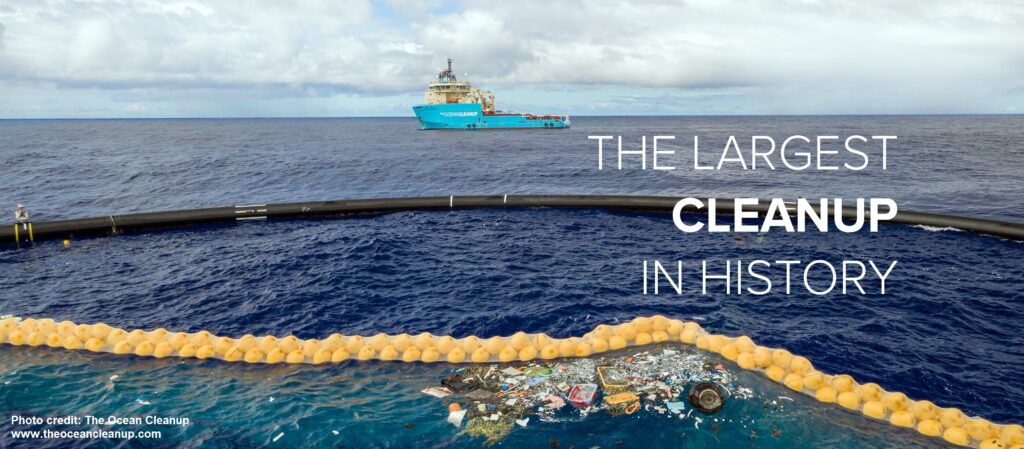
THE OCEAN CLEANUP
We absolutely love what The Ocean Cleanup is doing and you can be a part of it too! For the first time ever, this organization has successfully created and launched the world’s largest ocean cleanup efforts in history. Although we don’t have a specific fundraiser for this organization, we encourage sea-lovers to consider donating to The Ocean Cleanup via their Donation page. With the help of ocean cleanup systems and river interception technologies, their goal is to remove 90% of floating plastic by 2040!
ABOUT THE OCEAN CLEANUP
The Ocean Cleanup is a non-profit organization developing advanced technologies to rid oceans and rivers of plastic, and was founded by Dutch inventor Boyan Slat in 2013 at the age of 18 in his hometown of Delft, the Netherlands. They began the world’s largest ocean cleanup in history, and successfully launched their first full-scale prototype in the Great Pacific Garbage Patch in 2021. The Ocean Cleanup is a registered Netherlands-based ‘Stichting’ nonproft and a 501(c)(3) in the United States. To learn more, visit theoceancleanup.com
OUR IMPACT
ONE TREE PLANTED
Only 30% of our wild forests remain globally. An estimated 50% of the planet’s wild forests were lost in 2015 alone. At the current rate, we will only have 10% of the world’s original forests left by 2030. As a matter of fact, according to NASA, the world’s rainforests will be gone by 2100 if the current rate of destruction continues.
Deforestation affects our health and climate change too. Did you know that deforestation is responsible for more greenhouse gas emissions than all the world’s cars, trucks, planes, and ships combined, and that almost 5 million people die prematurely from air pollution each year? That’s 1 year and 8 months of healthy life lost on average for every single person on Earth, making it the world’s 4th most lethal killer.
By planting trees, we are able to minimize our carbon footprint and maximize restorative efforts at the same time. You can learn more about how planting trees can reduce your carbon footprint here. We’ve partnered with One Tree Planted to support reforestation projects and conservation efforts around the globe. Here are just some of the amazing projects we have supported.
View all of the places you can plant trees here
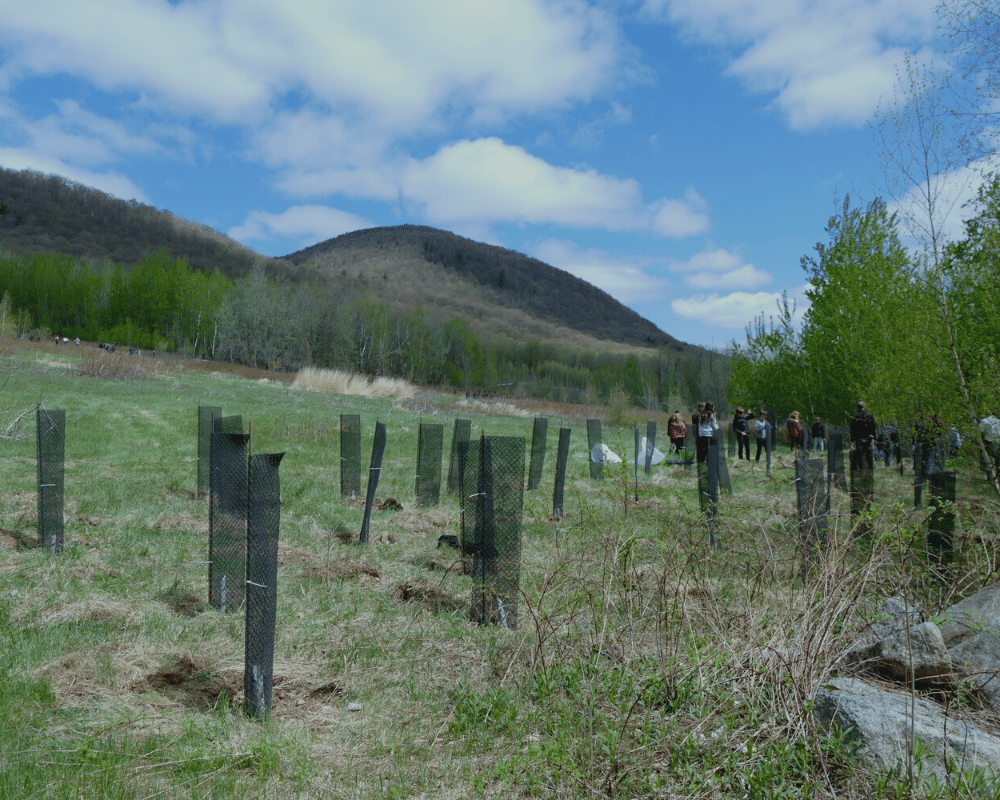
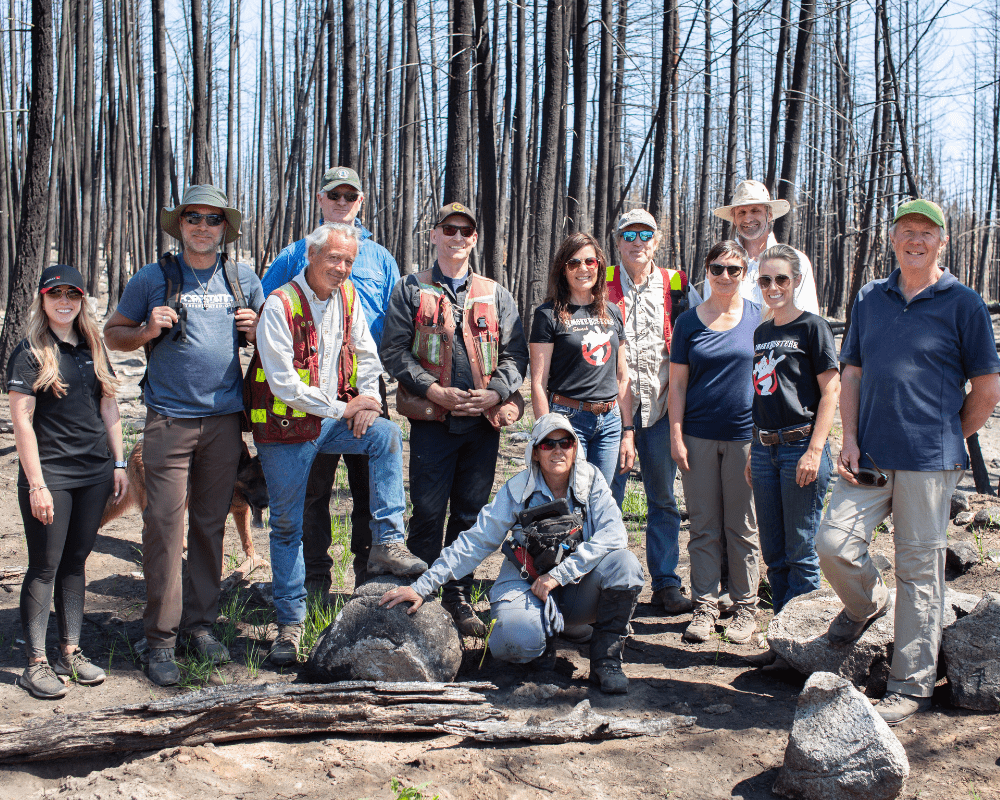

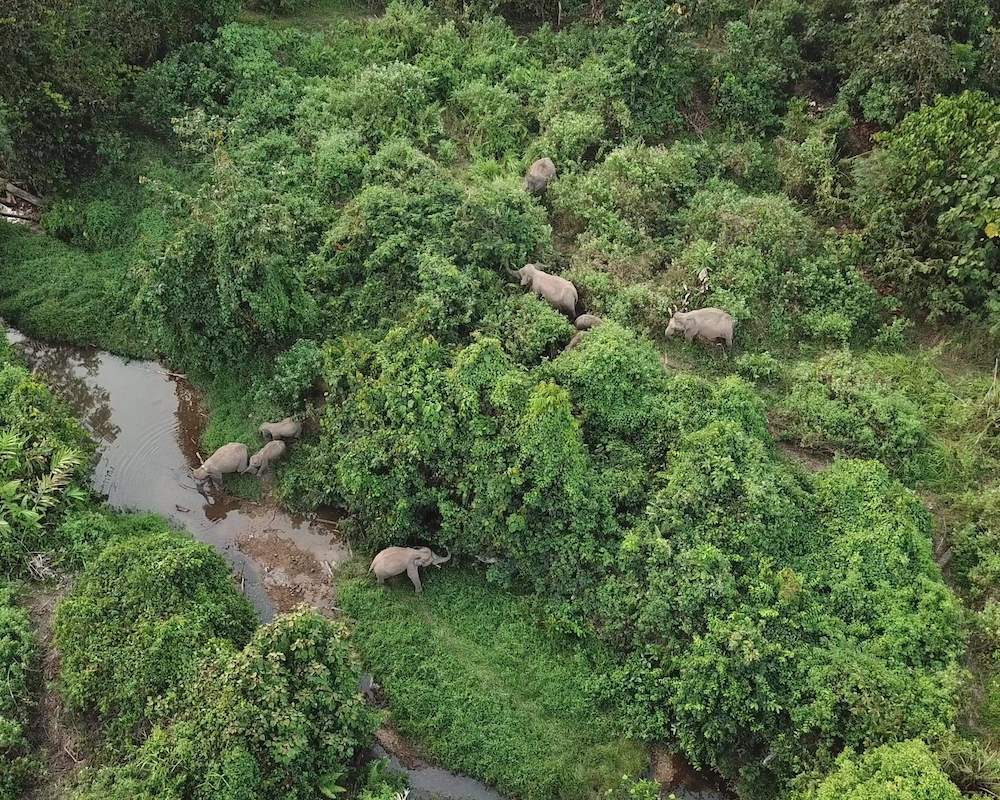
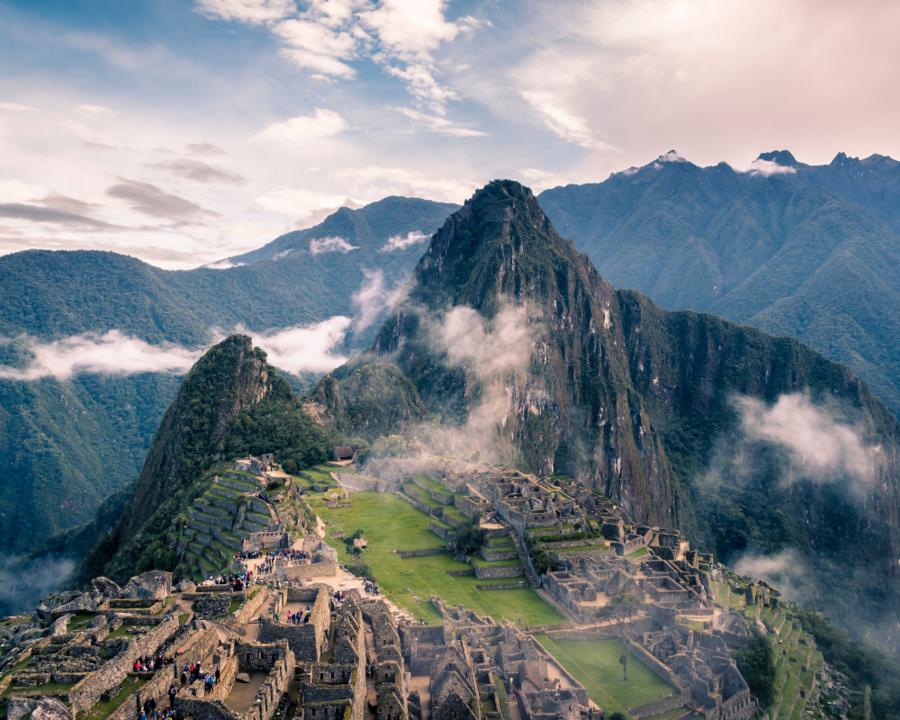
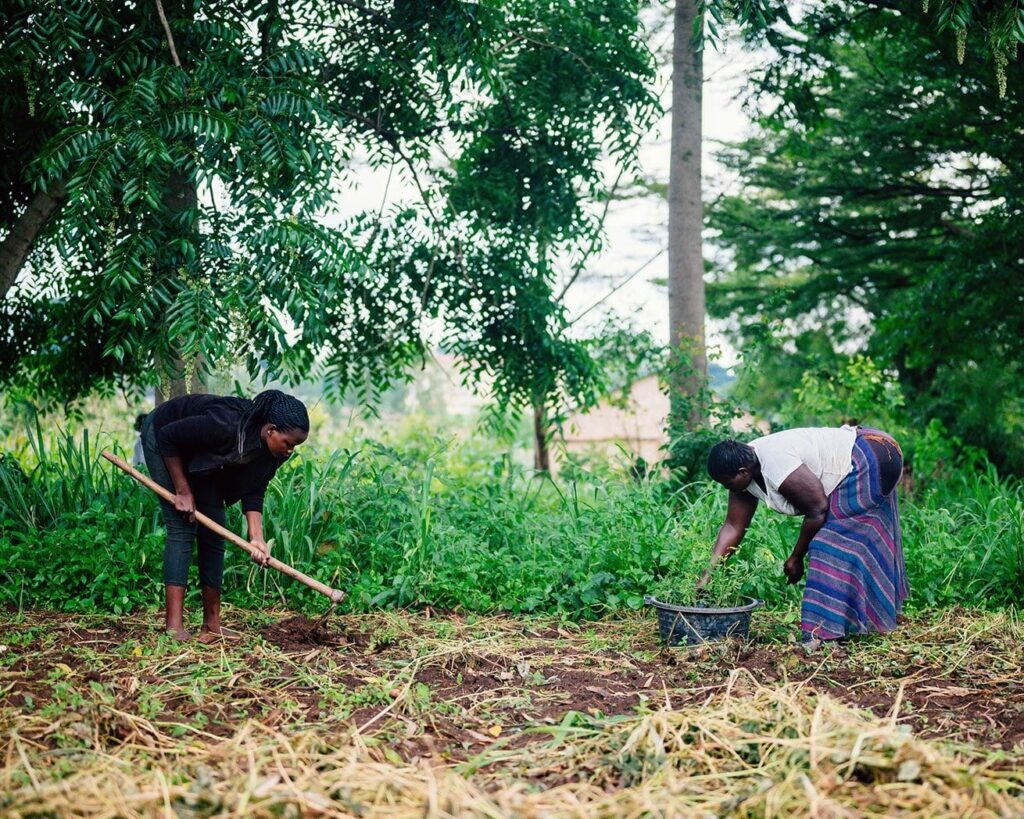
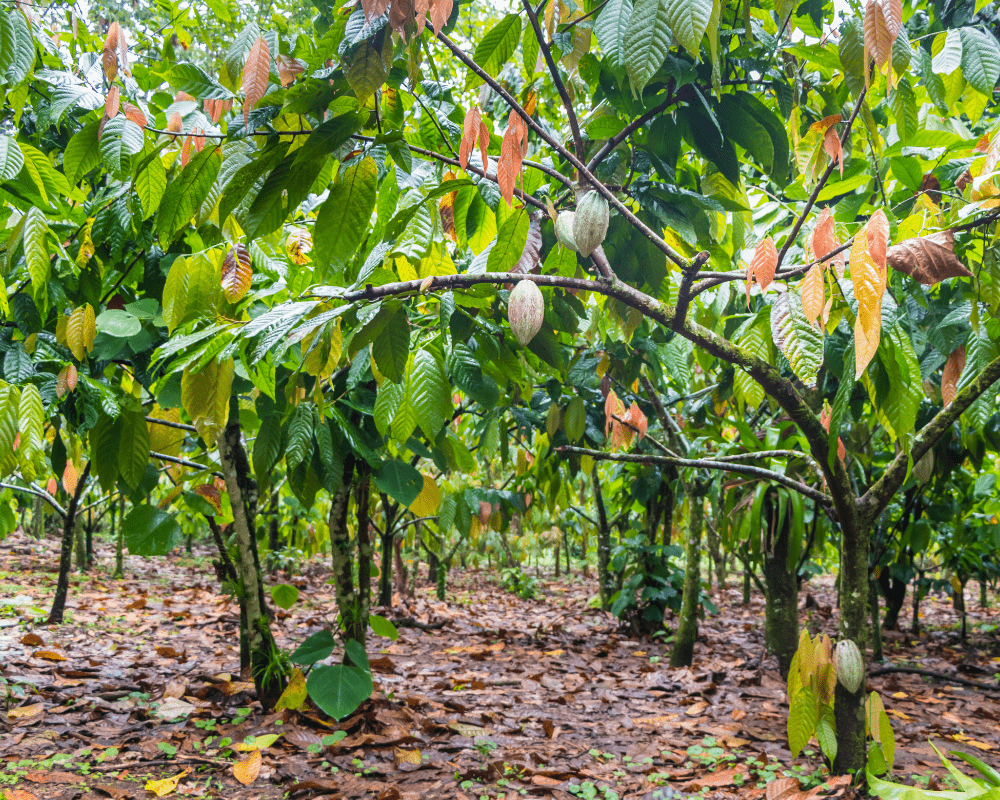
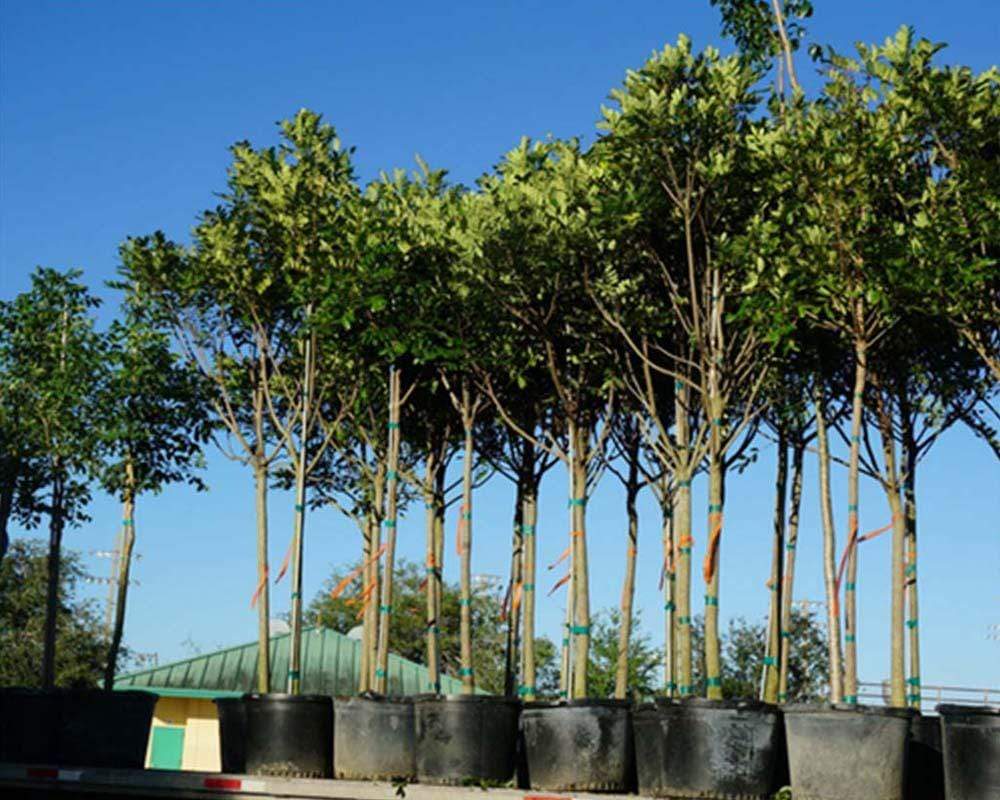
THE OCEAN CLEANUP
Are you familiar with The Great Pacific Garbage Patch? It’s basically a massive landfill in our OCEAN, and it consists of roughly 1.8 trillion plastic pieces. Talk about a dump! Literally! A truck-load of plastic is dumped into the sea every single minute, totaling an estimated 5 trillion pieces of plastic is floating around in our oceans globally.
Irresponsible water management can be detrimental to both humans and animals around the world. For example, cotton production requires so much water that it emptied an entire sea! (the Aral Sea in Uzbekistan). It has been called one of the worst environmental disasters in history.
We support The Ocean Cleanup for their innovative solutions and proven concepts to drastically improve the current conditions of our ocean and rivers. They are not only cleaning the current pollution from our oceans, but are also intercepting future waste from rivers too. They also campaigned that the plastic from these cleanups can be recycled and used by businesses to promote sustainability in their manufacturing process. For the first time ever, this organization has successfully created and launched the world’s largest ocean cleanup efforts in history.
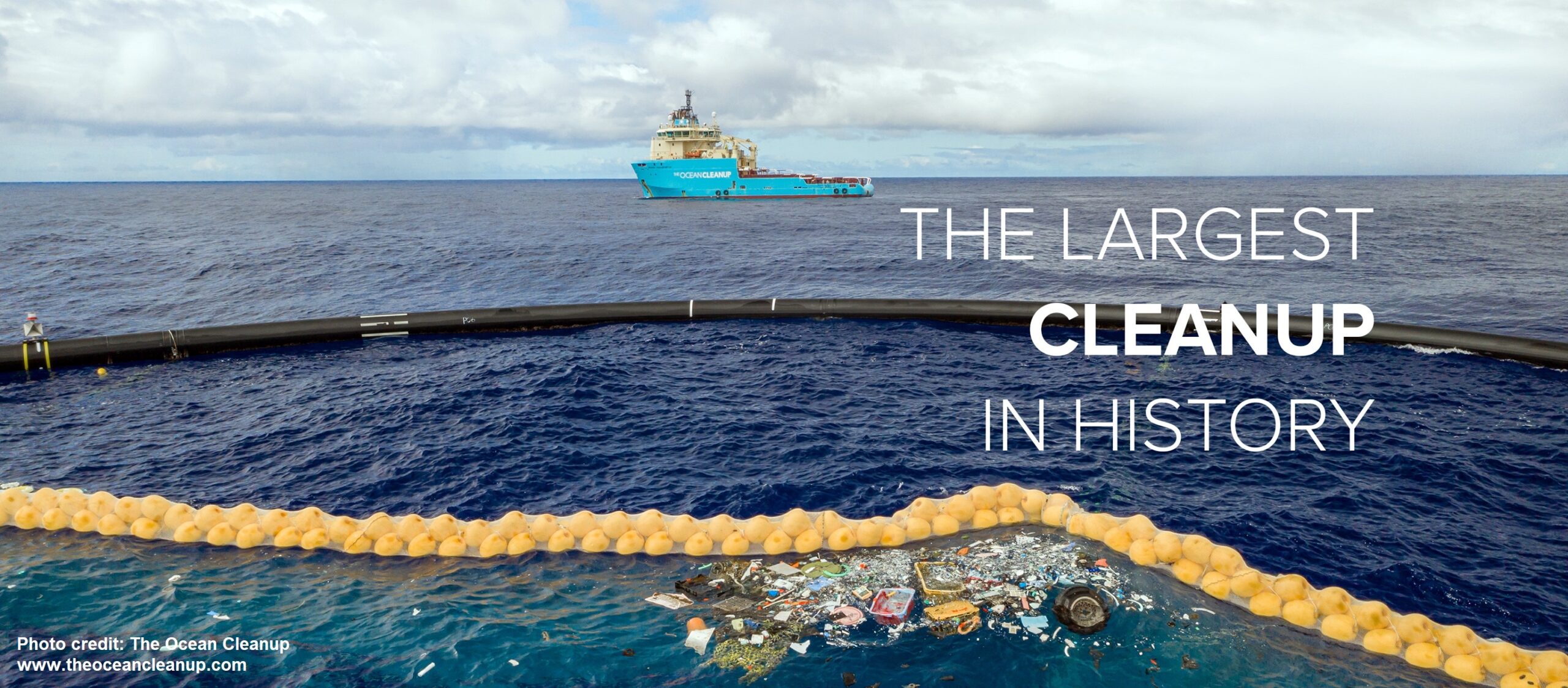
Learn more about The Ocean Cleanup efforts here
OTHER WAYS TO HELP
Do you know what your carbon footprint is? Check out these carbon calculators from the EPA, the The Nature Conservancy and Global Footprint Network to find out!
FACTS AND STATS
- One domestic flight takes 64 trees to offset it’s CO2 emissions.
- In 2018, there were an estimated 1.73 trillion barrels of oil in the world. Enough oil to last another 50 years with an average global oil consumption of 95 million barrels per day. That means that all oil resources available on Earth will be depleted by 2068.
- The concentration of carbon dioxide (CO2) in our atmosphere was 416 parts per million as of July 2021. It is the highest it has been in human history.
- Landfills are composed of 35% packaging materials.
- Renewable energy currently creates 5 times more jobs than fossil fuels, according to the International Renewable Energy Agency (IRENA).
- From 1850 to 2019, 2,400 gigatons of CO2 were emitted by human activity. Around 950 gigatons went into the atmosphere. The rest has been absorbed by oceans, trees, and land.
- 70% of the earth is covered in water, yet only 3% of it is fresh. Of that 3%, 2.6% of it is locked away in glaciers and polar ice caps. That leaves us with 0.4% of the earth’s drinkable water to be shared among 7 billion of its inhabitants.
- On some beaches on the Big Island of Hawaii, as much as 15% of the sand is actually grains of microplastic.
- More than 1,200 species of fish and sea mammals are impacted by plastic, through ingestion or entanglement – both of which can make them sick or kill them.
- It takes about 6 gallons of water to grow a single serving of lettuce. More than 2,600 gallons is required to produce a single serving of steak.
- The average American uses 2,000 gallons of water everyday.
- It takes about 1.4 gallons of water to produce a typical single-use water or soda bottle.
- 3,190 gallons of water is required to make a single mobile smartphone.
Ideas to reduce our carbon footprint
- Fix leaky faucets around the house.
- Take shorter showers. Cutting 4 minutes off your shower can save 30 gallons of water.
- Turn off the tap while brushing your teeth.
- Reduce CO2 emissions and walk or bike whenever possible.
- Switch to LED lightbulbs. You can save up to 90% of energy costs too.
- Use less paper and store documents digitally, use paperless billing, and signup for digital bank statements.
- Invest in reusable cups and bottles to reduce plastic waste.
- Use washable silverware instead of plastic cutlery.
- Borrow books, CD’s, and movies from your local library.
- Run your dishwasher and washing machine only when it’s a full load.
- Use rechargeable batteries wherever possible to lower environmental waste.
- Purchase products from sustainability responsible businesses.
- Paper or plastic? Opt for reusable grocery bags instead. Bonus if they are made with recycle materials!
- Recycle disposable products properly.
- Repurpose furniture and other items around your house instead of tossing them in the trash.
- Host an ocean cleanup or trash pickup event in your community.
WANT TO LEARN MORE?
Helpful Links
https://www.un.org/en/climatechange/climate-fast-facts
https://climate.nasa.gov/evidence
https://theoceancleanup.com/great-pacific-garbage-patch
https://www.nationalgeographic.org/encyclopedia/great-pacific-garbage-patch
https://oceanservice.noaa.gov/facts/garbagepatch.html
https://www.theworldcounts.com/challenges
https://www.waterwise.org.uk/save-water
https://savethewater.org/water-facts
https://www.conservation.org/stories/what-is-a-carbon-footprint
https://onetreeplanted.org/blogs/stories/carbon-footprints
https://www.un.org/en/climatechange/science/key-findings